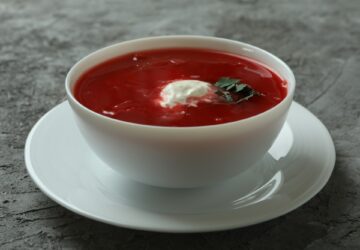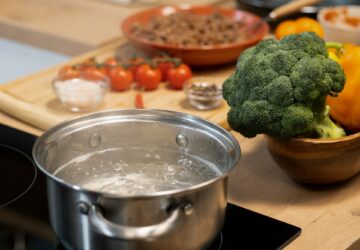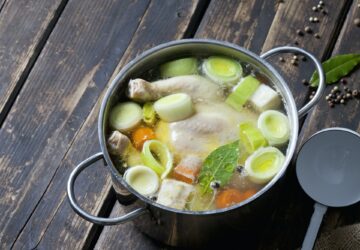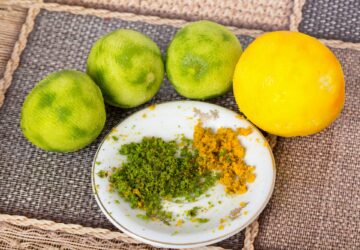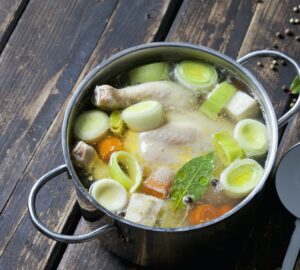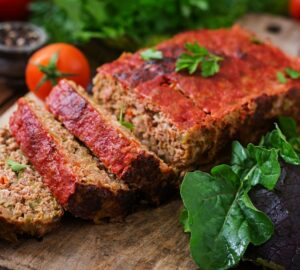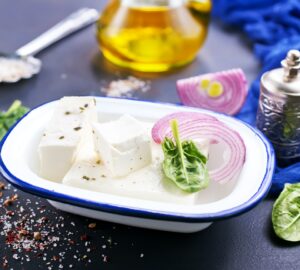Butter is a dairy product made from the fat and protein components of milk or cream. It has been a staple in many cuisines for centuries, valued for its rich flavor, smooth texture, and versatility in cooking and baking. Butter is primarily produced from cow’s milk, but it can also be made from the milk of other animals such as sheep, goats, and buffalo.
Composition and Production:
Butter typically contains around 80% milk fat, with the remaining 20% consisting of water and milk solids. The process of making butter involves separating the fat from the liquid (buttermilk) in cream by agitating or churning it. This can be done using traditional methods, such as a hand-operated churn or a modern electric mixer.
During churning, the fat molecules in the cream begin to clump together, forming a solid mass (butter) and leaving behind a liquid (buttermilk). The butter is then washed with cold water to remove any remaining buttermilk, which can cause spoilage. Finally, the butter is kneaded or worked to achieve a uniform consistency and to incorporate any desired additives, such as salt.
Types of Butter:
There are several types of butter, each with its unique characteristics and uses.
- Sweet Cream Butter: This is the most common type of butter and is made from fresh pasteurized cream. It can be salted or unsalted and is used in a wide range of sweet and savory dishes.
- Cultured Butter: Made from cream that has been fermented with lactic acid bacteria, cultured butter has a tangier flavor than sweet cream butter. It is often preferred for its complex taste and is popular in European countries.
- Raw Cream Butter: Produced from unpasteurized cream, raw cream butter has a more robust flavor compared to butter made from pasteurized cream. However, it can pose a risk of foodborne illness due to the potential presence of harmful bacteria.
- Clarified Butter (Ghee): This type of butter has had the milk solids and water removed, leaving only the pure butterfat. Clarified butter has a higher smoke point than regular butter, making it ideal for high-heat cooking methods like frying. Ghee, a form of clarified butter, is commonly used in Indian and Middle Eastern cuisines.
- Compound Butter: This is butter that has been mixed with various herbs, spices, or other flavorings to create a flavored spread or enhance the taste of dishes.
Nutrition and Health Effects:
Butter is high in saturated fat and calories, which has led to concerns about its impact on heart health. However, recent research has shown that moderate consumption of saturated fat may not be as detrimental to heart health as once believed. Butter also contains essential nutrients, such as vitamins A, D, E, and K, as well as trace amounts of minerals like calcium and potassium.
While butter can be part of a healthy diet in moderation, it is essential to balance its consumption with other sources of healthy fats, such as olive oil, avocados, and nuts.
Culinary Uses:
Butter is a versatile ingredient that can be used in various ways in the kitchen. Some of its primary culinary applications include:
- Cooking: Butter adds flavor, moisture, and richness to sautéed or pan-fried dishes.
- Baking: Butter provides tenderness, flakiness, and flavor to baked goods like cookies, cakes, and pastries. It also contributes to the browning and leavening processes in baked goods.
- Spreading: Butter is commonly used as a spread on bread, toast, and other baked goods, providing a smooth, creamy texture and rich taste.
- Sauces: Butter is a key component in many classic sauces, such as hollandaise, béarnaise, and beurre blanc, where it adds flavor, thickness, and a glossy finish.
- Emulsification: Butter is used to emulsify sauces and dressings, contributing to a stable and smooth consistency.
- Flavor enhancer: When used in moderation, butter can elevate the flavor profile of various dishes, from savory to sweet.
Storage and Handling:
Proper storage and handling of butter are essential to preserve its quality and prevent spoilage. Butter should be stored in the refrigerator, preferably in a covered butter dish or wrapped in its original packaging, to protect it from absorbing odors or flavors from other foods. It can be stored in the refrigerator for up to a month or frozen for up to 6 months.
When using butter for cooking or baking, it is crucial to follow recipe instructions regarding temperature, as this can significantly impact the final result. For example, when making pie crust or biscuits, cold butter is necessary to create a flaky texture, while room temperature butter is often needed for creaming with sugar in cookie or cake recipes.
Alternatives and Substitutes:
While butter is a popular and versatile ingredient, there are several alternatives available for those who cannot or choose not to consume it due to dietary restrictions or health concerns.
- Margarine: Made from vegetable oils, margarine is a common substitute for butter in cooking and baking. However, it is important to note that margarine can vary in its fat and water content, which can affect the outcome of some recipes.
- Vegetable shortening: This is a solid fat made from hydrogenated vegetable oils and is often used in place of butter for baking. It has a higher melting point than butter, resulting in a different texture in some baked goods.
- Plant-based butter: These are vegan-friendly alternatives made from a blend of plant-based oils, water, and emulsifiers. They are designed to mimic the taste and texture of dairy butter and can be used in many recipes as a direct substitute.
- Coconut oil: Solid at room temperature, coconut oil can be used as a substitute for butter in some recipes, particularly in baking. However, it imparts a distinct coconut flavor that may not be suitable for all dishes.
- Olive oil: While it doesn’t have the same creamy texture as butter, olive oil can be used as a healthier alternative in some recipes, particularly for sautéing or roasting.
In conclusion, butter is a flavorful and versatile ingredient with a long culinary history. It has various applications in cooking and baking, contributing to the taste, texture, and appearance of dishes. Despite concerns about its high saturated fat content, butter can be part of a balanced diet when consumed in moderation. For those who cannot or choose not to consume butter, there are numerous alternatives available that cater to different dietary needs and preferences.
Finishing: A small pat of butter can be added to cooked dishes like risotto, pasta, or grilled vegetables, just before serving, to enhance their flavor and texture.
